Introduction:
What Is Sewing Machine Tension and Why Does It Matter?
How many times have you fired up your sewing machine to start a new sewing project inspired, only to end in finding loops on the underside, the fabric getting puckered, or with uneven stitches?
The most common of these is wrong thread-tension of the sewing-machine.
Mastering tension:
✅ Ensuring stitches are Neat and Balanced
✅ Prevents fabric puckering
✅ Stops thread breakage
✅ Keeps your machine running smoothly
✅ Improves your sewing confidence In this comprehensive 2025 guide you’ll learn:
What is sewing machine tension, and how does it work Signs your tension needs adjusting How to change tension on top and bobbin easily
Troubleshooting common tension problems Tension Tips on various fabrics and threads Pro tips for perfect stitches every time What Is Sewing Machine Tension? Sewing machine
What is Sewing Machine Tension?
The forming of a stitch occurs when:
The thread (top) needle falls into the fabric. The bobbin (bottom) thread loops in on it. Both strings are taken to get a firm stitch. The discs of tension regulate the tightness of the top thread.
The spring that regulates the tension in the bottom thread is the bobbin case spring. In case they are not balanced, your stitches will be looped on one side or too tight together to the extent that they pucker.
Symptoms That You Need to Tighten Tension Be on the lookout of these obvious signs:
Loops or sloppy stitches on the backside ended up like this? That means you have set the top tension too loose
Top side loops 15 -> Bobbin tension or top tension is tight 15 Fabric puckering Top tension is too close or wrong pressure of the presser foot
Understanding Sewing Machine Tension Variance
Most home sewing machines have a tension control numbered 0–9, adjusting the interplay between the top and bottom threads. Lower settings slacken the grip of the top thread, assuming a looser stitch.
Higher settings cinch the top thread tighter for sturdier seams. For medium-weight cotton calico, a midpoint setting of 4 or 5 typically produces balanced tension.
However, before fiddling with the tension dial, scrutinize other potential causes for stitching irregularities.
First, double check the threading path is clear with no twists, ensuring the bobbin is wound evenly and inserted correctly.
Consider also that the needle type and size must coordinate with the fabric weight and weave for an ideal stitch.
Only if these preconditions are satisfied should you begin experimenting with adjusting tension settings, fine-tuning the interlaced threads for consistent, well-formed stitches wherever the presser foot falls.
Testing Your Sewing Machine’s Tension Settings
Tension Test Step-by-Step:
1️⃣ For this test, use two threads of different colors: red for the spool and white for the bobbin.
2️⃣ On a piece of fabric which is similar to what you intend to work on, sew a straight line for a quarter of the fabric’s length.
3️⃣ Check the stitches and assess your work:
Stitches should be uniform on the upper and under sides.
Tension should be balanced. You should see dots of the opposite color thread on both sides, with no loops or thread pulling.
Top Thread Tension Adjustment
1️⃣ Identify your tension dial, which is commonly on the machine’s top or front side.
2️⃣ If, on the second side, you observe bottom loops, increase your tension by turning the dial upwards.
3️⃣ If you notice top loops, the pressure is too low. Turn the dial down to a lower number, which reduces the pressure.
4️⃣ Make changes in small, half increments.
5️⃣ Check your stitches after each change.
Note: For precise adjustments, use the same fabric and in the same number of layers as your project.
Adjusting Bobbin Tension
For the bobbin tension adjustment:
Primary tension adjustment is often done with the top tension alone, but in some cases, tweaking the bobbin tension is required— especially for older machines, or after they have been serviced.
For models with removable bobbin cases:
✅ Find the small screw on the bobbin case.
✅ Turn this screw clockwise which increases tension for tightening.
✅ To decrease tension, turn counter-clockwise.
Always test your stitches after every quarter turn.
For systems with a drop-in bobbin:
The tension for bobbin is facilities.
Thread and Needle Tension Interlinkage Issues
Thread Tension:
✅ Thick threads may need lower tension to avoid snapping.
✅ Loops may result from too much tension with finer threads.
Needle Dimensions:
✅ Improper needle size may result in skipped stitches or cut loops.
✅ Needle should be proportional to fabric and thread.
Tension Adjustments Related to Fabrics
✅ Light silks, chiffon, and chiffon require: Lower tension to avoid puckering.
✅ Heavy fabrics like denim, or canvas: May need moderately higher tension to create strong stitches.
✅ Knits require: Adjusting tension with lowered presser foot pressure prevents stretch.
Addressing Issues Related to Tension
✅ Problem: Loops Below
Top tension loosened.
Increase top tension.
✅ Problem: Loops Above
Top tension tight, or loosened bobbin tension.
Lower top tension or check bobbin tension.
✅ Problem: Continuous fabric puckering
Top tension excessively tight.
Reduce tension and presser foot pressure.
✅ Problem: Breakage of threads
Needle too tight, broken, improperly threaded, or poorly adjusted.
Thread and needle check plus tension lowering.
✅ Problem: stitches not even
Incorrect winding of bobbin and threading.
Wheel bobbin, reload machine.
Presser foot pressure and tension.
As a result, the fabric may pucker, not due to excessive tension, but because of high presser foot pressure.
✅ Some machines have adjustable presser foot pressure.
✅ Lessening the pressure where.
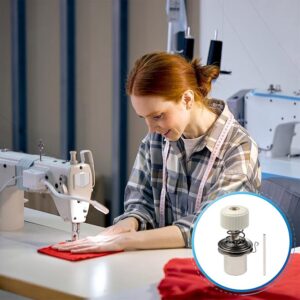
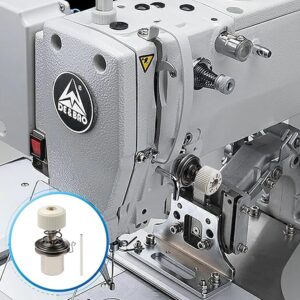
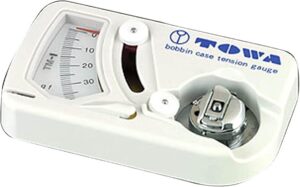
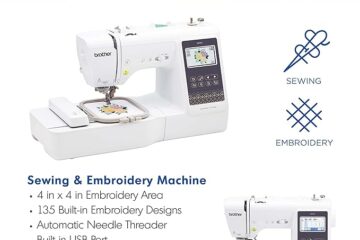
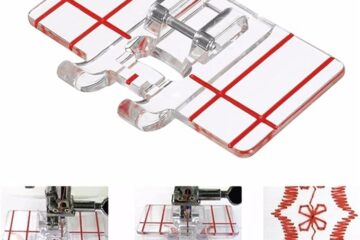
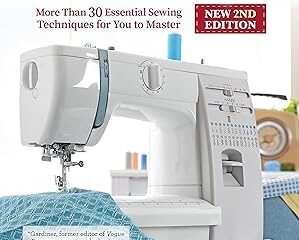
0 Comments